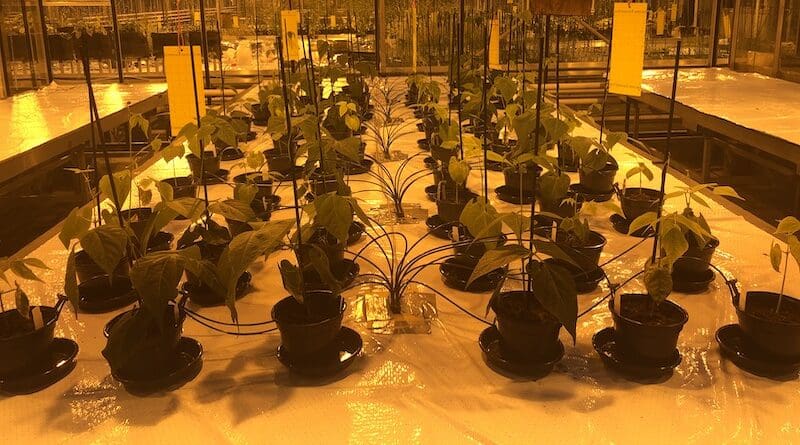Human Urine Boosts Green Bean Growth On Moon And Mars Regolith Simulants
There is the dream of living and working on the Moon or planet Mars. But what are the inhabitants going to eat out there, and how are they going to grow their food? A circular and sustainable agricultural ecosystem for food production will be essential. A research team at Wageningen University & Research and the B.A.S.E. project investigates how to grow crops in a sustainable circular way, using local resources. Their latest study shows that applying human urine in the form of struvite (a mineral) boosts green bean growth on Mars and Moon regolith simulants.
Struvite as manure
‘The human urine we used in the study was collected from portable toilets at festivals in Amsterdam. You can imagine that there all kinds of substances in urine that we would not like to use in crop fertilizer,’ says Wieger Wamelink, principal investigator of the study that was recently published in the Open Agriculture journal. ‘So, we used struvite instead, a mineral that is extracted from human urine and consists of magnesium ammonium and phosphate and that is almost 100% pure, so it doesn’t bring along any contaminations, like medicine remains or drugs. It releases the nutrients slowly during the whole growth period.’
Lack of nutrients in regolith simulants
We, as research team, used regolith (the upper layer of ‘soil’) simulants instead of real Mars and moon regoliths for our experiments. Mars regolith is not available on Earth, and although there is some Moon regolith on earth, it is not present in the quantities needed for a crop growth experiment. However, both the real regoliths and their simulants lack significant quantities of ammonium, nitrate and phosphate, which are essential for a proper plant growth.
‘We have proven’, Wamelink states, ‘that struvite can be an excellent manure. In this way, we can easily process and apply human urine as fertilizer in the regoliths. It boosts plant growth and can increase bean harvest with several factors on the regolith simulants.’
Did we taste the beans?
We did not try to taste and eat the green beans. That was firstly because at the moment of harvest struvite was not officially allowed to be used as a manure for crops. Secondly, regoliths (and their simulants) contain a fair amount of poisonous metals which could end up in the beans. More research on the contamination of the crops with heavy metals from the regolith is needed.
The golden circle of crop growth on Mars or the Moon
Because there are only ice and regolith with no organic matter available on Mars and the Moon, the soils have to be amended and improved to make crop growth possible. What is needed is a closed sustainable agricultural ecosystem. One of the key factors in this system will be the recycling of human waste.
‘By applying struvite extracted from human urine, we can fill in one of the steps in the golden circle of crop growth on Mars and the Moon, but also here on Earth,’ according to Wamelink. Human urine could be (again) applied as fertilizer instead of being wasted.
As a next step, the recently started B.A.S.E. project aims to set up a Moon/Mars dome containing all necessities to grow crops at Mars or the Moon, indoors. This dome is a research facility to test innovations and make them work together as a circular system. Its blueprint could be applied on Mars or on the Moon, but also on planet Earth. For example, in deserts or on the South Pole.
The Food for Mars and Moon project
The Food For Mars and Moon project investigates how to grow crops on both celestial bodies, applying the resources available at hand; regolith and ice. In the past the research team already was able to grow a whole series of crops, including potato, carrot, pea, tomato, garden cress and radish on regolith simulants. The project is now in the phase of making crop production fully circular, which includes the application of pollinators, bacteria, fungi and earthworms.

